E1-2500 [in 18 benchmarks]
AMD
E1-2500
Buy
- Interface
- Core clock speed
- Max video memory
- Memory type
- Memory clock speed
- Maximum resolution
Summary
AMD started AMD E1-2500 sales 23 May 2013. This is a Kabini architecture notebook processor primarily aimed at office systems. It has 2 cores and 2 threads, and is based on 28nm manufacturing technology, with a maximum frequency of 1400 MHz and a locked multiplier.
Compatibility-wise, this is FT3 processor with a TDP of 15 Watt and a maximum temperature of 90 °C. It supports DDR3 memory.
It provides poor benchmark performance at
0.59%
of a leader’s which is AMD EPYC 7h22.
EPYC
7h22
Compare
General info
E1-2500 processor market type (desktop or notebook), architecture, sales start time and pricing.
| Place in performance rating | 2665 | |
| Market segment | Laptop | |
| Series | AMD E-Series | |
| Architecture codename | Kabini (2013−2014) | |
| Release date | 23 May 2013 (9 years old) |
|
| Current price | $200 | of 25332 (Xeon Platinum 8276L) |
Technical specs
Basic microprocessor parameters such as number of cores, number of threads, base frequency and turbo boost clock, lithography, cache size and multiplier lock state. These parameters can generally indicate CPU performance, but to be more precise you have to review its test results.
| Physical cores | 2 (Dual-core) | |
| Threads | 2 | |
| Boost clock speed | 1. 4 GHz 4 GHz |
of 8.3 (Ryzen 7 7700) |
| L2 cache | 1024 KB | of 12288 (Core 2 Quad Q9550) |
| L3 cache | 0 KB | of 32768 (Ryzen Threadripper 1998) |
| Chip lithography | 28 nm | of 4 (Ryzen 9 7940HS) |
| Die size | 246 mm2 | |
| Maximum case temperature (TCase) | 90 °C | of 105 (Core i7-5950HQ) |
| Number of transistors | 1,178 million | of 9900000 (Ryzen 9 7950X) |
| 64 bit support | + | |
| Windows 11 compatibility | — |
Compatibility
Information on E1-2500 compatibility with other computer components and devices: motherboard (look for socket type), power supply unit (look for power consumption) etc.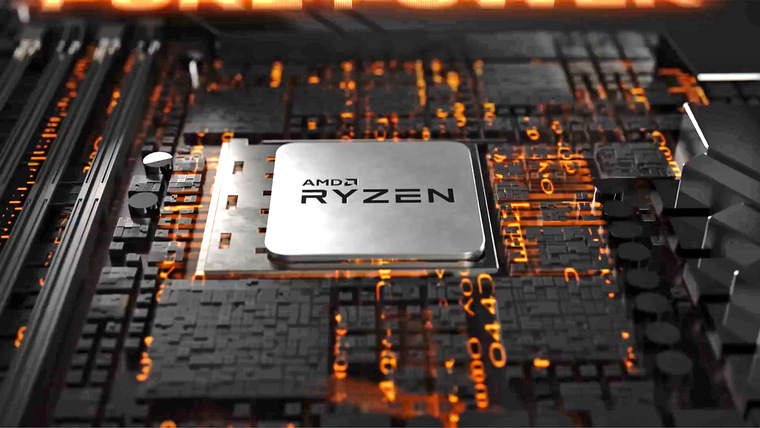 Useful when planning a future computer configuration or upgrading an existing one.
Useful when planning a future computer configuration or upgrading an existing one.
Note that power consumption of some processors can well exceed their nominal TDP, even without overclocking. Some can even double their declared thermals given that the motherboard allows to tune the CPU power parameters.
| Number of CPUs in a configuration | 1 | of 8 (Opteron 842) |
| Socket | FT3 | |
| Thermal design power (TDP) | 15 Watt | of 400 (Xeon Platinum 9282) |
Technologies and extensions
Technological capabilities and additional instructions supported by E1-2500. You’ll probably need this information if you require some particular technology.
| Instruction set extensions | 86x SSE (1, 2, 3, 3S, 4.1, 4.2, 4A),-64, AES, AVX, DDR3L-1333 | |
| AES-NI | + | |
| FMA | FMA4 | |
| AVX | + | |
| PowerTune | — | |
| TrueAudio | — | |
| PowerNow | + | |
| PowerGating | + | |
| Out-of-band client management | — | |
| VirusProtect | + |
Virtualization technologies
Supported virtual machine optimization technologies.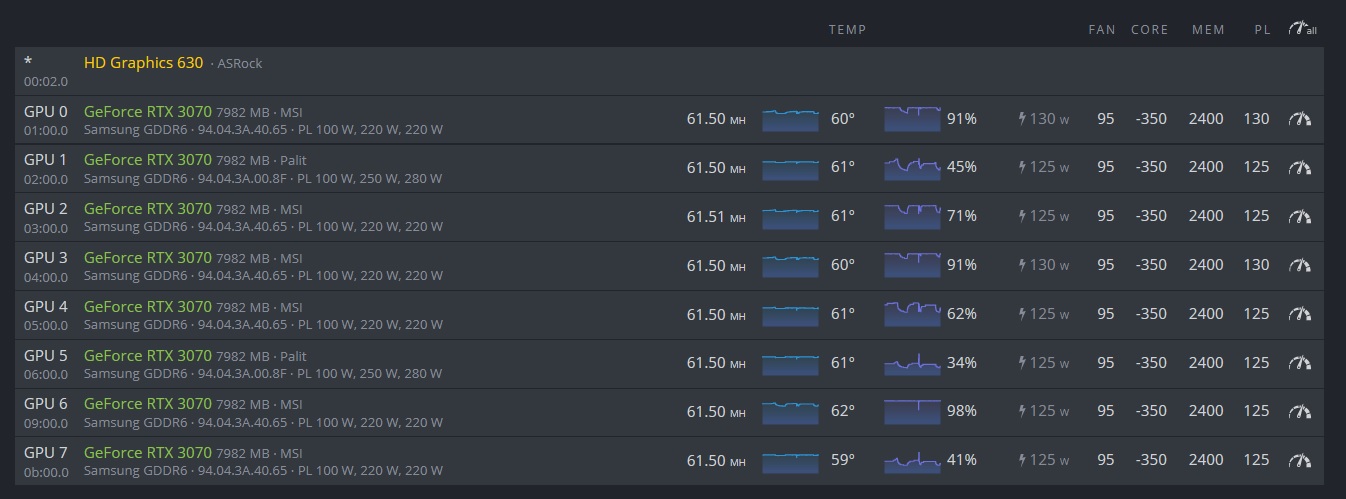 Some are specific to Intel only, some to AMD.
Some are specific to Intel only, some to AMD.
| AMD-V | + | |
| IOMMU 2.0 | + |
Memory specs
Types, maximum amount and channel number of RAM supported by E1-2500’s memory controller. Depending on the motherboard, higher memory frequency may be supported.
| Supported memory types | DDR3 | of 5600 (Ryzen 9 7940HS) |
| Max memory channels | 1 | of 12 (Xeon Platinum 9221) |
Graphics specifications
General parameters of GPU integrated into E1-2500.
| Integrated graphics card | AMD Radeon HD 8240 | |
| Enduro | + | |
| Switchable graphics | 1 | |
| UVD | + | |
| VCE | + |
Graphics interfaces
Available interfaces and connections of E1-2500’s integrated GPU.
| DisplayPort | + | |
| HDMI | + |
Graphics API support
APIs supported by E1-2500’s integrated GPU, sometimes API versions are included.
| DirectX | DirectX® 12 | |
| Vulkan | 1 |
Peripherals
Specifications and connection types of supported peripherals.
| PCIe version | 2.0 | of 5 (Core i9-12900K) |
Benchmark performance
Single-core and multi-core benchmark results of E1-2500. Overall benchmark performance is measured in points in 0-100 range, higher is better.
Overall score
This is our combined benchmark performance rating. We are regularly improving our combining algorithms, but if you find some perceived inconsistencies, feel free to speak up in comments section, we usually fix problems quickly.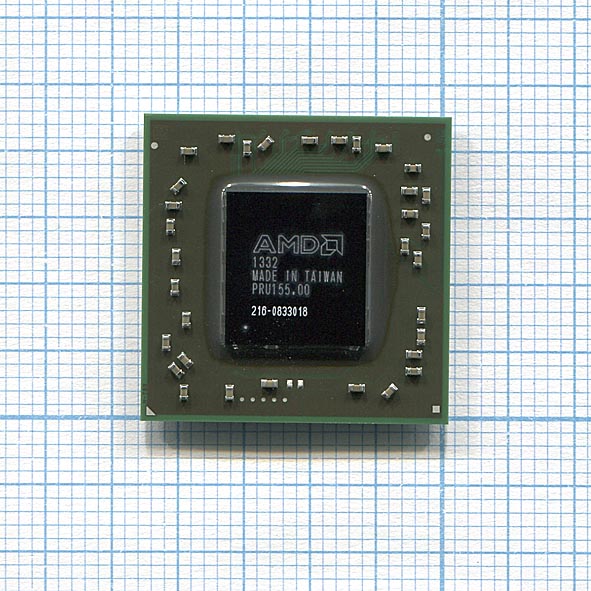
E1-2500
0.59
- Passmark
- GeekBench 5 Single-Core
- GeekBench 5 Multi-Core
- Cinebench 10 32-bit single-core
- Cinebench 10 32-bit multi-core
- 3DMark06 CPU
- Cinebench 11.5 64-bit multi-core
- Cinebench 15 64-bit multi-core
- Cinebench 15 64-bit single-core
- Cinebench 11.5 64-bit single-core
- TrueCrypt AES
- WinRAR 4.0
- x264 encoding pass 2
- x264 encoding pass 1
- Geekbench 3 32-bit multi-core
- Geekbench 3 32-bit single-core
- Geekbench 2
Passmark
Passmark CPU Mark is a widespread benchmark, consisting of 8 different types of workload, including integer and floating point math, extended instructions, compression, encryption and physics calculation. There is also one separate single-threaded scenario measuring single-core performance.
There is also one separate single-threaded scenario measuring single-core performance.
Benchmark coverage: 67%
E1-2500
597
GeekBench 5 Single-Core
GeekBench 5 Single-Core is a cross-platform application developed in the form of CPU tests that independently recreate certain real-world tasks with which to accurately measure performance. This version uses only a single CPU core.
Benchmark coverage: 37%
E1-2500
151
GeekBench 5 Multi-Core
GeekBench 5 Multi-Core is a cross-platform application developed in the form of CPU tests that independently recreate certain real-world tasks with which to accurately measure performance. This version uses all available CPU cores.
Benchmark coverage: 37%
E1-2500
271
Cinebench 10 32-bit single-core
Cinebench R10 is an ancient ray tracing benchmark for processors by Maxon, authors of Cinema 4D. Its single core version uses just one CPU thread to render a futuristic looking motorcycle.
Its single core version uses just one CPU thread to render a futuristic looking motorcycle.
Benchmark coverage: 20%
E1-2500
1052
Cinebench 10 32-bit multi-core
Cinebench Release 10 Multi Core is a variant of Cinebench R10 using all the processor threads. Possible number of threads is limited by 16 in this version.
Benchmark coverage: 19%
E1-2500
2016
3DMark06 CPU
3DMark06 is a discontinued DirectX 9 benchmark suite from Futuremark. Its CPU part contains two scenarios, one dedicated to artificial intelligence pathfinding, another to game physics using PhysX package.
Benchmark coverage: 19%
E1-2500
1021
Cinebench 11.5 64-bit multi-core
Cinebench Release 11.5 Multi Core is a variant of Cinebench R11.5 which uses all the processor threads. A maximum of 64 threads is supported in this version.
A maximum of 64 threads is supported in this version.
Benchmark coverage: 17%
E1-2500
1
Cinebench 15 64-bit multi-core
Cinebench Release 15 Multi Core (sometimes called Multi-Thread) is a variant of Cinebench R15 which uses all the processor threads.
Benchmark coverage: 14%
E1-2500
44
Cinebench 15 64-bit single-core
Cinebench R15 (standing for Release 15) is a benchmark made by Maxon, authors of Cinema 4D. It was superseded by later versions of Cinebench, which use more modern variants of Cinema 4D engine. The Single Core version (sometimes called Single-Thread) only uses a single processor thread to render a room full of reflective spheres and light sources.
Benchmark coverage: 14%
E1-2500
27
Cinebench 11.5 64-bit single-core
Cinebench R11. 5 is an old benchmark by Maxon, authors of Cinema 4D. It was superseded by later versions of Cinebench, which use more modern variants of Cinema 4D engine. The Single Core version loads a single thread with ray tracing to render a glossy room full of crystal spheres and light sources.
5 is an old benchmark by Maxon, authors of Cinema 4D. It was superseded by later versions of Cinebench, which use more modern variants of Cinema 4D engine. The Single Core version loads a single thread with ray tracing to render a glossy room full of crystal spheres and light sources.
Benchmark coverage: 14%
E1-2500
0.3
TrueCrypt AES
TrueCrypt is a discontinued piece of software that was widely used for on-the-fly-encryption of disk partitions, now superseded by VeraCrypt. It contains several embedded performance tests, one of them being TrueCrypt AES, which measures data encryption speed using AES algorithm. Result is encryption speed in gigabytes per second.
Benchmark coverage: 13%
E1-2500
0
WinRAR 4.0
WinRAR 4.0 is an outdated version of a popular file archiver. It contains an internal speed test, using ‘Best’ setting of RAR compression on large chunks of randomly generated data. Its results are measured in kilobytes per second.
Its results are measured in kilobytes per second.
Benchmark coverage: 12%
E1-2500
604
x264 encoding pass 2
x264 Pass 2 is a slower variant of x264 video compression that produces a variable bit rate output file, which results in better quality since the higher bit rate is used when it is needed more. Benchmark result is still measured in frames per second.
Benchmark coverage: 12%
E1-2500
4
x264 encoding pass 1
x264 version 4.0 is a video encoding benchmark uses MPEG 4 x264 compression method to compress a sample HD (720p) video. Pass 1 is a faster variant that produces a constant bit rate output file. Its result is measured in frames per second, which means how many frames of the source video file were encoded per second.
Benchmark coverage: 12%
E1-2500
20
Geekbench 3 32-bit multi-core
Benchmark coverage: 6%
E1-2500
1340
Geekbench 3 32-bit single-core
Benchmark coverage: 6%
E1-2500
785
Geekbench 2
Benchmark coverage: 5%
E1-2500
1905
Relative perfomance
Overall E1-2500 performance compared to nearest competitors among notebook CPUs.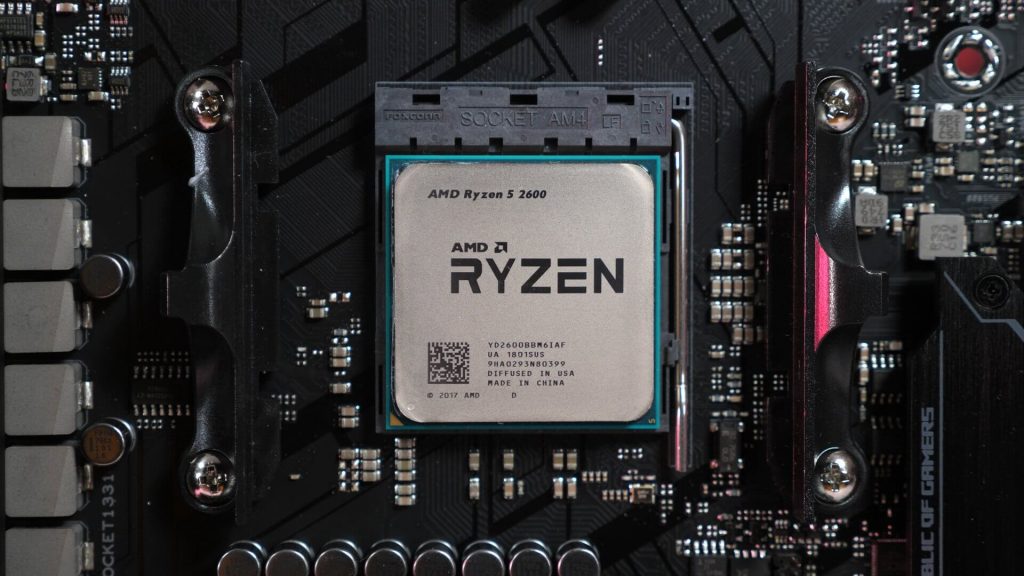
Intel Celeron J1750
100
Intel Celeron N3050
100
Intel Pentium Dual Core T2410
100
AMD E1-2500
100
Intel Celeron N2840
98.31
Intel Celeron J1800
98.31
Intel Pentium 2129Y
98.31
Intel equivalent of E1-2500
We believe that the nearest equivalent to E1-2500 by Intel is Pentium Dual Core T2410, which is nearly equal in speed and higher by 2 positions in our rating.
Pentium Dual
Core T2410
Compare
Here are some closest Intel rivals to E1-2500:
Intel Celeron N3050
100
Intel Pentium Dual Core T2410
100
Intel Celeron J1750
100
AMD E1-2500
100
Intel Celeron J1800
98.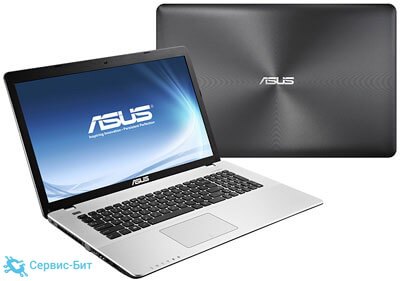 31
31
Intel Core 2 Duo L7500
98.31
Intel Celeron N2840
98.31
Similar processors
Here is our recommendation of several processors that are more or less close in performance to the one reviewed.
Celeron
J1750
Compare
Celeron
N3050
Compare
E1 Micro
6200T
Compare
Celeron
N3000
Compare
Celeron
J1800
Compare
Celeron
N2840
Compare
Best GPUs for E1-2500
These graphics cards are most commonly used with E1-2500 according to our statistics, based on user self-reported PC configurations.
Radeon HD
8240
49.3%
Radeon HD
8210
14.2%
Radeon R3
Graphics
3.8%
Radeon HD
8240 Mobile IGP
3.1%
Radeon
Graphics
3.1%
Radeon Pro
WX 8200
1.5%
HD
Graphics 4000
1.3%
Radeon HD
8400
1.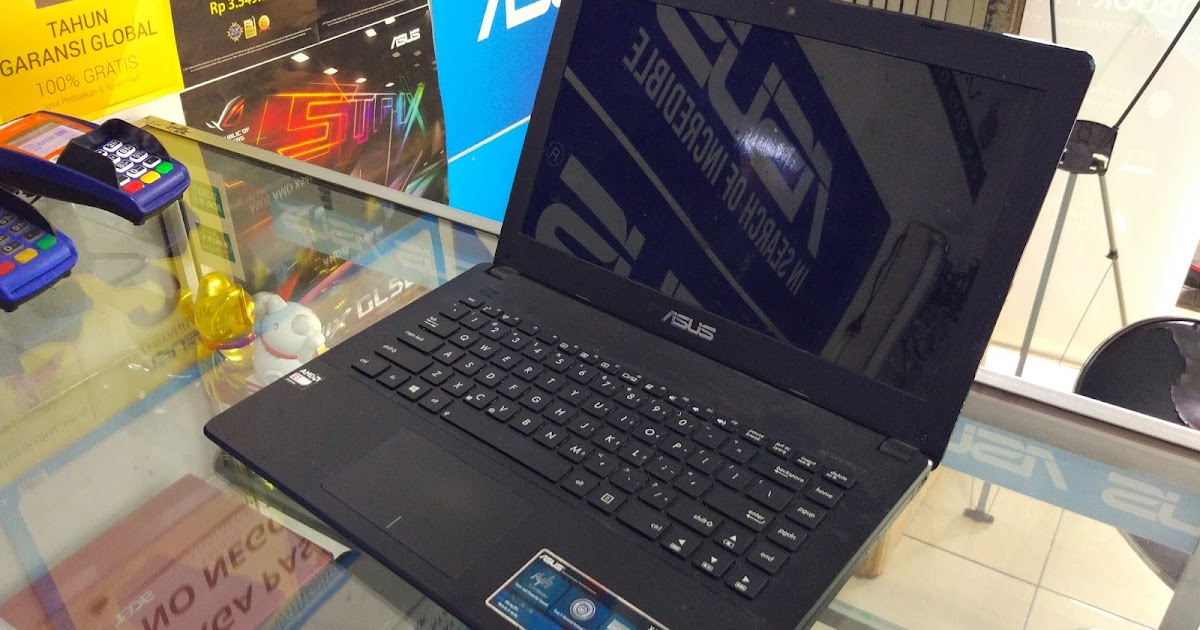 1%
1%
Radeon HD
7870
0.9%
GeForce GTX
1050 Ti
0.9%
These are the fastest GPUs paired with E1-2500 in our user configurations.
There is a total of 452 configurations based on E1-2500 in our database.
GeForce RTX
3090 Ti
0.2% (1/452)
GeForce RTX
3080 Ti
0.2% (1/452)
Quadro RTX
8000
0.4% (2/452)
GeForce GTX
1080 Ti
0. 2% (1/452)
2% (1/452)
GeForce RTX
2070
0.2% (1/452)
Radeon Pro
WX 8200
1.5% (7/452)
GeForce RTX
3050 8 GB
0.2% (1/452)
GeForce GTX
1060 6 GB
0.2% (1/452)
GeForce GTX
1650 SUPER
0.2% (1/452)
Radeon RX
580
0.2% (1/452)
User rating
Here is the rating given to the reviewed processor by our users. Let others know your opinion by rating it yourself.
Let others know your opinion by rating it yourself.
Questions and comments
Here you can ask a question about E1-2500, agree or disagree with our judgements, or report an error or mismatch.
Please enable JavaScript to view the comments powered by Disqus.
AMD E1-2500 vs Intel Core i3-3220: What is the difference?
26points
AMD E1-2500
37points
Intel Core i3-3220
Comparison winner
vs
66 facts in comparison
AMD E1-2500
Intel Core i3-3220
Why is AMD E1-2500 better than Intel Core i3-3220?
- 0.5MB bigger L2 cache?
1MBvs0.5MB - 40W lower TDP?
15Wvs55W - 0.25MB/core more L2 cache per core?
0.5MB/corevs0.25MB/core - Has AES?
Why is Intel Core i3-3220 better than AMD E1-2500?
- 2.36x faster CPU speed?
2 x 3. 3GHzvs2 x 1.4GHz
3GHzvs2 x 1.4GHz - 2 more CPU threads?
4vs2 - 6nm smaller semiconductor size?
22nmvs28nm - 7.17x higher PassMark result?
4232vs590 - 3.8x higher PassMark result (single)?
1765vs465 - Uses multithreading?
- 650MHz faster GPU turbo speed?
1050MHzvs400MHz
Which are the most popular comparisons?
AMD E1-2500
vs
Intel Core i3-3130M
Intel Core i3-3220
vs
Intel Core i5-3470
AMD E1-2500
vs
Intel Core i3-3110M
Intel Core i3-3220
vs
AMD A6-5400K
AMD E1-2500
vs
Intel Core i3-2328M
Intel Core i3-3220
vs
AMD A4-3400
AMD E1-2500
vs
Intel Celeron J3060
Intel Core i3-3220
vs
Intel Core i5-2400
AMD E1-2500
vs
Intel Core i3-2120
Intel Core i3-3220
vs
AMD E1-1200
AMD E1-2500
vs
AMD E1-1200
Intel Core i3-3220
vs
AMD E-300
AMD E1-2500
vs
Intel Core i5-4200U
Intel Core i3-3220
vs
Intel Celeron 6305
AMD E1-2500
vs
Intel Core i3-2130
Intel Core i3-3220
vs
Intel Pentium Silver N5000
AMD E1-2500
vs
AMD A4-3300
Intel Core i3-3220
vs
AMD A6-7480
Intel Core i3-3220
vs
AMD Athlon II X2 270
Price comparison
User reviews
Overall Rating
AMD E1-2500
0 User reviews
AMD E1-2500
0. 0/10
0/10
0 User reviews
Intel Core i3-3220
3 User reviews
Intel Core i3-3220
6.7/10
3 User reviews
Features
Value for money
No reviews yet
8.0/10
3 votes
Gaming
No reviews yet
5.0/10
3 votes
Performance
No reviews yet
6.0/10
3 votes
Reliability
No reviews yet
9.0/10
3 votes
Energy efficiency
No reviews yet
9.3/10
3 votes
Performance
CPU speed
2 x 1.4GHz
2 x 3.3GHz
The CPU speed indicates how many processing cycles per second can be executed by a CPU, considering all of its cores (processing units). It is calculated by adding the clock rates of each core or, in the case of multi-core processors employing different microarchitectures, of each group of cores.
CPU threads
More threads result in faster performance and better multitasking.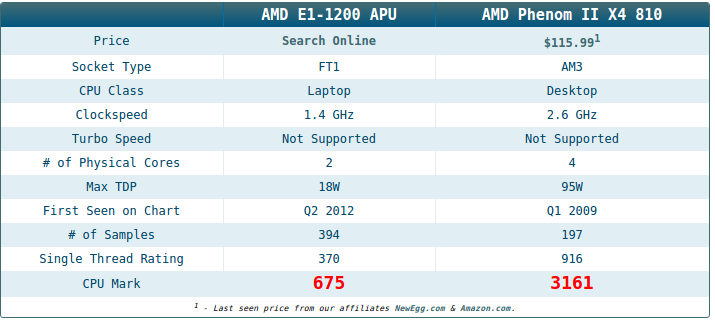
turbo clock speed
Unknown. Help us by suggesting a value. (AMD E1-2500)
Unknown. Help us by suggesting a value. (Intel Core i3-3220)
When the CPU is running below its limitations, it can boost to a higher clock speed in order to give increased performance.
Has an unlocked multiplier
✖AMD E1-2500
✖Intel Core i3-3220
Some processors come with an unlocked multiplier which makes them easy to overclock, allowing you to gain increased performance in games and other apps.
L2 cache
A larger L2 cache results in faster CPU and system-wide performance.
L3 cache
Unknown. Help us by suggesting a value. (AMD E1-2500)
A larger L3 cache results in faster CPU and system-wide performance.
L1 cache
A larger L1 cache results in faster CPU and system-wide performance.
L2 core
0.5MB/core
0.25MB/core
More data can be stored in the L2 cache for access by each core of the CPU.
L3 core
Unknown. Help us by suggesting a value. (AMD E1-2500)
1.5MB/core
More data can be stored in the L3 cache for access by each core of the CPU.
Benchmarks
PassMark result
This benchmark measures the performance of the CPU using multiple threads.
PassMark result (single)
This benchmark measures the performance of the CPU using a single thread.
Geekbench 5 result (multi)
Unknown. Help us by suggesting a value. (AMD E1-2500)
Unknown. Help us by suggesting a value. (Intel Core i3-3220)
Geekbench 5 is a cross-platform benchmark that measures a processor’s multi-core performance. (Source: Primate Labs, 2023)
Cinebench R20 (multi) result
Unknown. Help us by suggesting a value. (AMD E1-2500)
Help us by suggesting a value. (AMD E1-2500)
Unknown. Help us by suggesting a value. (Intel Core i3-3220)
Cinebench R20 is a benchmark tool that measures a CPU’s multi-core performance by rendering a 3D scene.
Cinebench R20 (single) result
Unknown. Help us by suggesting a value. (AMD E1-2500)
Unknown. Help us by suggesting a value. (Intel Core i3-3220)
Cinebench R20 is a benchmark tool that measures a CPU’s single-core performance by rendering a 3D scene.
Geekbench 5 result (single)
Unknown. Help us by suggesting a value. (AMD E1-2500)
Unknown. Help us by suggesting a value. (Intel Core i3-3220)
Geekbench 5 is a cross-platform benchmark that measures a processor’s single-core performance. (Source: Primate Labs, 2023)
Blender (bmw27) result
Unknown. Help us by suggesting a value. (AMD E1-2500)
Unknown. Help us by suggesting a value.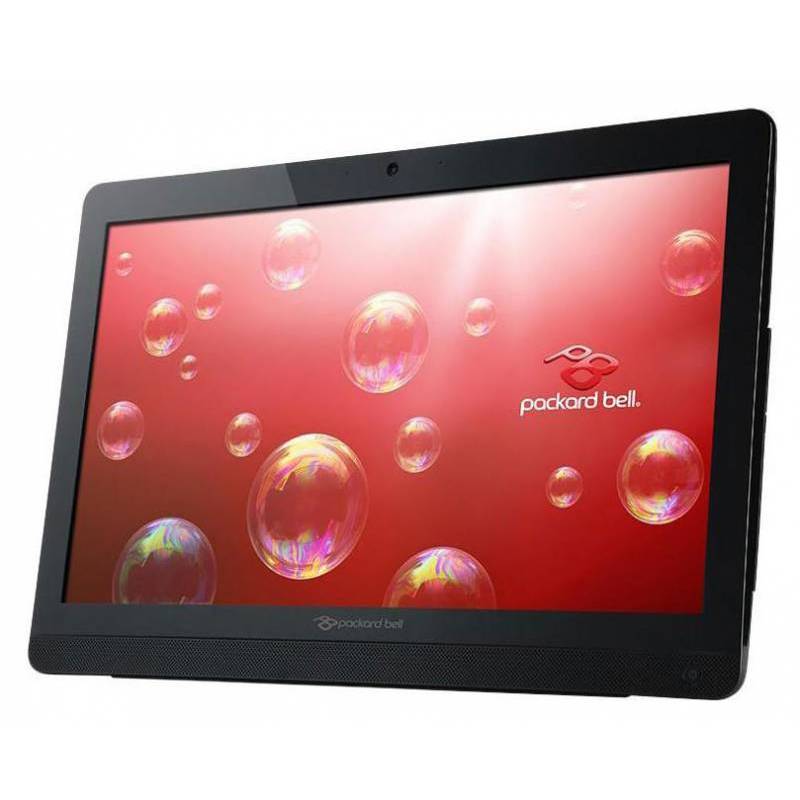 (Intel Core i3-3220)
(Intel Core i3-3220)
The Blender (bmw27) benchmark measures the performance of a processor by rendering a 3D scene. More powerful processors can render the scene in less time.
Blender (classroom) result
Unknown. Help us by suggesting a value. (AMD E1-2500)
Unknown. Help us by suggesting a value. (Intel Core i3-3220)
The Blender (classroom) benchmark measures the performance of a processor by rendering a 3D scene. More powerful processors can render the scene in less time.
performance per watt
Unknown. Help us by suggesting a value. (AMD E1-2500)
Unknown. Help us by suggesting a value. (Intel Core i3-3220)
This means the CPU is more efficient, giving a greater amount of performance for each watt of power used.
Integrated graphics
GPU clock speed
Unknown. Help us by suggesting a value. (AMD E1-2500)
650MHz
The graphics processing unit (GPU) has a higher clock speed.
GPU turbo
400MHz
1050MHz
When the GPU is running below its limitations, it can boost to a higher clock speed in order to give increased performance.
GPU execution units
Unknown. Help us by suggesting a value. (AMD E1-2500)
A graphics processing unit (GPU) with a greater number of execution units can deliver better graphics.
supported displays
Unknown. Help us by suggesting a value. (AMD E1-2500)
Using multiple displays you can create a larger workspace, making it easier to work across multiple apps.
DirectX version
DirectX is used in games, with newer versions supporting better graphics.
OpenGL version
Unknown. Help us by suggesting a value. (AMD E1-2500)
OpenGL is used in games, with newer versions supporting better graphics.
OpenCL version
Unknown. Help us by suggesting a value. (AMD E1-2500)
Some apps use OpenCL to apply the power of the graphics processing unit (GPU) for non-graphical computing. Newer versions introduce more functionality and better performance.
texture mapping units (TMUs)
Unknown. Help us by suggesting a value. (AMD E1-2500)
Unknown. Help us by suggesting a value. (Intel Core i3-3220)
TMUs take textures and map them to the geometry of a 3D scene. More TMUs will typically mean that texture information is processed faster.
render output units (ROPs)
Unknown. Help us by suggesting a value. (AMD E1-2500)
Unknown. Help us by suggesting a value. (Intel Core i3-3220)
The ROPs are responsible for some of the final steps of the rendering process, writing the final pixel data to memory and carrying out other tasks such as anti-aliasing to improve the look of graphics.
Memory
RAM speed
Unknown. Help us by suggesting a value. (AMD E1-2500)
1600MHz
It can support faster memory, which will give quicker system performance.
maximum memory bandwidth
Unknown. Help us by suggesting a value. (AMD E1-2500)
25.6GB/s
This is the maximum rate that data can be read from or stored into memory.
DDR memory version
DDR (Double Data Rate) memory is the most common type of RAM. Newer versions of DDR memory support higher maximum speeds and are more energy-efficient.
memory channels
Unknown. Help us by suggesting a value. (AMD E1-2500)
More memory channels increases the speed of data transfer between the memory and the CPU.
maximum memory amount
Unknown. Help us by suggesting a value. (AMD E1-2500)
The maximum amount of memory (RAM) supported.
bus transfer rate
Unknown. Help us by suggesting a value. (AMD E1-2500)
The bus is responsible for transferring data between different components of a computer or device.
Supports ECC memory
✖AMD E1-2500
✖Intel Core i3-3220
Error-correcting code memory can detect and correct data corruption. It is used when is it essential to avoid corruption, such as scientific computing or when running a server.
eMMC version
Unknown. Help us by suggesting a value. (AMD E1-2500)
Unknown. Help us by suggesting a value. (Intel Core i3-3220)
A higher version of eMMC allows faster memory interfaces, having a positive effect on the performance of a device. For example, when transferring files from your computer to the internal storage over USB.
bus speed
Unknown. Help us by suggesting a value. (AMD E1-2500)
Unknown. Help us by suggesting a value. (Intel Core i3-3220)
The bus is responsible for transferring data between different components of a computer or device.
Features
uses multithreading
✖AMD E1-2500
✔Intel Core i3-3220
Multithreading technology (such as Intel’s Hyperthreading or AMD’s Simultaneous Multithreading) provides increased performance by splitting each of the processor’s physical cores into virtual cores, also known as threads. This way, each core can run two instruction streams at once.
Has AES
✔AMD E1-2500
✖Intel Core i3-3220
AES is used to speed up encryption and decryption.
Has AVX
✔AMD E1-2500
✔Intel Core i3-3220
AVX is used to help speed up calculations in multimedia, scientific and financial apps, as well as improving Linux RAID software performance.
SSE version
SSE is used to speed up multimedia tasks such as editing an image or adjusting audio volume. Each new version contains new instructions and improvements.
Has F16C
✔AMD E1-2500
✔Intel Core i3-3220
F16C is used to speed up tasks such as adjusting the contrast of an image or adjusting volume.
bits executed at a time
Unknown. Help us by suggesting a value. (AMD E1-2500)
Unknown. Help us by suggesting a value. (Intel Core i3-3220)
NEON provides acceleration for media processing, such as listening to MP3s.
Has MMX
✔AMD E1-2500
✔Intel Core i3-3220
MMX is used to speed up tasks such as adjusting the contrast of an image or adjusting volume.
Has TrustZone
✖AMD E1-2500
✖Intel Core i3-3220
A technology integrated into the processor to secure the device for use with features such as mobile payments and streaming video using digital rights management (DRM).
front-end width
Unknown. Help us by suggesting a value. (AMD E1-2500)
Unknown. Help us by suggesting a value. (Intel Core i3-3220)
The CPU can decode more instructions per clock (IPC), meaning that the CPU performs better
Price comparison
Which are the best CPUs?
Processor E1-2500 [in 18 benchmarks]
AMD
E1-2500
- Interface
- Core frequency
- Video memory size
- Memory type
- Memory frequency
- Maximum resolution
Description
AMD started AMD E1-2500 sales 23 May 2013. This is Kabini architecture notebook processor primarily aimed at office systems. It has 2 cores and 2 threads and is manufactured using 28nm process technology, the maximum frequency is 1400MHz, the multiplier is locked. nine0005
In terms of compatibility, this is an FT3 socket processor with a TDP of 15W and a maximum temperature of 90°C. It supports DDR3 memory.
It provides poor benchmark performance at
0. 59%
from the leader, which is AMD EPYC 7h22.
EPYC
7h22
Compare
General information
23 May 2013
(9 years ago)
Features
E1-2500 quantitative parameters: number of cores and threads, clock speeds, manufacturing process, cache size and multiplier lock state. They indirectly speak about the performance of the processor, but for an accurate assessment, you need to consider the results of the tests. nine0005
| Expanded instructions | 86x SSE (1, 3, 3S, 4.1, 4.2, 4A),-64, AES, DDR3L-1333 | AES-Ni | + |
| FMA | FMA4 | |
| AVX | + | |
| PowerTune | — | |
| TrueAudio | — | |
| PowerNow | + | |
| PowerGating | + | |
| Out-of-band | — | |
| VirusProtect | + |
| AMD-V | + | Immu 2.0 | + |
| DisplayPort | + | |
| HDMI | + | 9005 |
| DirectX | DirectX® 12 | |
| Vulkan0041 |
Peripherals
Peripherals supported by the E1-2500 and how to connect them.
| Aviation PCI Express | 2.0 | of 5 (Core i9-12900K) |
Tests in the benchmarks
These are the results of the E1-2500 performance tests in non-gaming benchmarks. The overall score is set from 0 to 100, where 100 corresponds to the fastest processor at the moment. nine0005
Overall performance in tests
This is our overall performance rating. We regularly improve our algorithms, but if you find any inconsistencies, feel free to speak up in the comments section, we usually fix problems quickly.
E1-2500
0.59
- Passmark
- GeekBench 5 Single-Core
- GeekBench 5 Multi-Core
- Cinebench 10 32-bit single-core
- Cinebench 10 32-bit multi-core
- 3DMark06 CPU
- Cinebench 11.5 64-bit multi-core
- Cinebench 15 64-bit multi-core
- Cinebench 15 64-bit single-core
- Cinebench 11.5 64-bit single-core
- TrueCrypt AES
- x264 encoding pass 2
- x264 encoding pass 1
- Geekbench 3 32-bit multi-core
- Geekbench 3 32-bit single-core
- Geekbench 2
nine0007 WinRAR 4.0
Passmark
Passmark CPU Mark is a widely used benchmark that consists of 8 different tests, including integer and floating point calculations, extended instruction tests, compression, encryption, and game physics calculations. Also includes a separate single-threaded test. nine0005
Benchmark coverage: 67%
E1-2500
597
GeekBench 5 Single-Core
GeekBench 5 Single-Core is a cross-platform application designed as CPU benchmarks that independently recreate certain real world tasks that can accurately measure performance. This version uses only one processor core.
Benchmark coverage: 37%
E1-2500
151
GeekBench 5 Multi-Core
GeekBench 5 Multi-Core is a cross-platform application designed as CPU benchmarks that independently recreate certain real world tasks that can accurately measure performance. This version uses all available processor cores.
Benchmark coverage: 37%
E1-2500
271
Cinebench 10 32-bit single-core
Cinebench R10 is a very outdated ray tracing benchmark for processors developed by the authors of Cinema 4D — Maxon. The Single-Core version uses a single CPU thread to render a futuristic motorcycle model.
Benchmark coverage: 20%
E1-2500
1052
Cinebench 10 32-bit multi-core
Cinebench Release 10 Multi Core is a variant of Cinebench R10 that uses all processor threads. The possible number of threads in this version is limited to 16.
Benchmark coverage: 19%
E1-2500
2016
3DMark06 CPU
3DMark06 is an outdated set of benchmarks based on DirectX 9 by Futuremark. Its processor part contains two tests, one of which calculates the pathfinding of game AI, the other emulates game physics using the PhysX package.
Benchmark coverage: 19%
E1-2500
1021
Cinebench 11.5 64-bit multi-core
Cinebench Release 11.5 Multi Core is a variant of Cinebench R11.5 that uses all processor threads. This version supports a maximum of 64 threads.
Benchmark coverage: 17%
E1-2500
1
Cinebench 15 64-bit multi-core
Cinebench Release 15 Multi Core (sometimes referred to as Multi-Thread) is a variant of Cinebench R15 that uses all of the processor threads. nine0005
Benchmark coverage: 14%
E1-2500
44
Cinebench 15 64-bit single-core
Cinebench R15 (Release 15) is a benchmark created by Maxon, the creator of the popular Cinema 4D 3D modeling package. It was superseded by later versions of Cinebench using more modern variants of the Cinema 4D engine. The Single Core version (sometimes referred to as Single-Thread) uses only one CPU thread to render a room full of mirror balls and complexly shaped lights. nine0005
Benchmark coverage: 14%
E1-2500
27
Cinebench 11.5 64-bit single-core
Cinebench R11.5 is an old Maxon development benchmark. authors of Cinema 4D. It has been superseded by later versions of Cinebench which use more modern variants of the Cinema 4D engine. The Single Core version loads one CPU thread with ray tracing, rendering a glossy room full of crystal spheres and lights. nine0005
Benchmark coverage: 14%
E1-2500
0.3
TrueCrypt AES
TrueCrypt is a deprecated program that was widely used to encrypt disk partitions on the fly. It contains several built-in benchmarks, one of which is TrueCrypt AES. It measures the speed of data encryption using the AES algorithm. The result of the test is the encryption speed in gigabytes per second. nine0005
Benchmark coverage: 13%
E1-2500
0
WinRAR 4.0
WinRAR 4.0 is an outdated version of the popular archiver. It contains an internal speed test using maximum compression by the RAR algorithm on large amounts of randomly generated data. Results are measured in kilobytes per second.
Benchmark coverage: 12%
E1-2500
604
x264 encoding pass 2
x264 Pass 2 is a slower MPEG4 x264 video compression benchmark, resulting in a variable bit rate output file. This results in a better quality of the resulting video file, as a higher bit rate is used when it is needed more. The benchmark result is still measured in frames per second.
Benchmark coverage: 12%
nine0003 E1-2500
4
x264 encoding pass 1
The x264 benchmark uses the MPEG 4 x264 compression method to encode the HD (720p) sample video. Pass 1 is a faster option that produces an output file at a constant bit rate. Its result is measured in frames per second, that is, how many frames of the source video file were encoded in one second on average.
Benchmark coverage: 12%
nine0003 E1-2500
20
Geekbench 3 32-bit multi-core
Benchmark coverage: 6%
E1-2500
1340
Geekbench 3 32-bit single-core
Benchmark coverage: 6%
E1-2500
785
Geekbench 2
Benchmark coverage: 5%
E1-2500
nine0040 1905
Relative capacity
Overall performance of the E1-2500 compared to its closest competitor in notebook processors.
Intel Celeron J1750
100
Intel Celeron N3050
100
Intel Pentium Dual Core T2410
100
nine0003 AMD E1-2500
100
Intel Celeron N2840
98.31
Intel Celeron J1800
98.31
Intel Pentium 2129Y
98.31
Competitor from Intel
We believe that the nearest equivalent to E1-2500 from Intel is Pentium Dual Core T2410, which is approximately equal in speed and lower by 2 positions in our rating. nine0005
Pentium Dual
Core T2410
Compare
Here are some of Intel’s closest competitors to the E1-2500:
Intel Celeron N3050
100
Intel Pentium Dual Core T2410
100
Intel Celeron J1750
100
nine0005
AMD E1-2500
100
Intel Celeron J1800
98. 31
Intel Core 2 Duo L7500
98.31
Intel Celeron N2840
98.31
Other processors
Here we recommend several processors that are more or less similar in performance to the reviewed one. nine0005
Celeron
N3050
Compare
Celeron
J1750
Compare
Celeron
N3000
Compare
E1 Micro
6200T
Compare
Celeron
N2840
Compare
Celeron
J1800
Compare
Best graphics cards for E1-2500
We have 452 configurations based on E1-2500 in our database.
According to statistics, these cards are most often used with the E1-2500:
Radeon HD
nine0040 8240
49.3%
Radeon HD
8210
14.2%
Radeon R3
Graphics
3.8%
Radeon HD
8240 Mobile IGP
3.1%
Radeon
nine0040 Graphics
3.1%
Radeon Pro
WX 8200
1.5%
HD
Graphics 4000
1.3%
Radeon HD
8400
1.1%
Radeon HD
7870
0. 9%
GeForce GTX
1050 Ti
0.9%
Here are the most powerful video cards used with the E1-2500 according to user statistics:
GeForce RTX
3090 Ti
0.2% (1/452)
GeForce RTX
3080 Ti
nine0004
0.2% (1/452)
Quadro RTX
8000
0.4% (2/452)
GeForce GTX
1080 Ti
0.2% (1/452)
GeForce RTX
2070
0.2% (1/452)
Radeon Pro
nine0040 WX 8200
1.5% (7/452)
GeForce RTX
3050 8GB
0.
